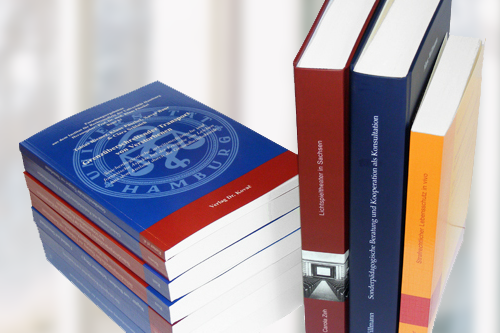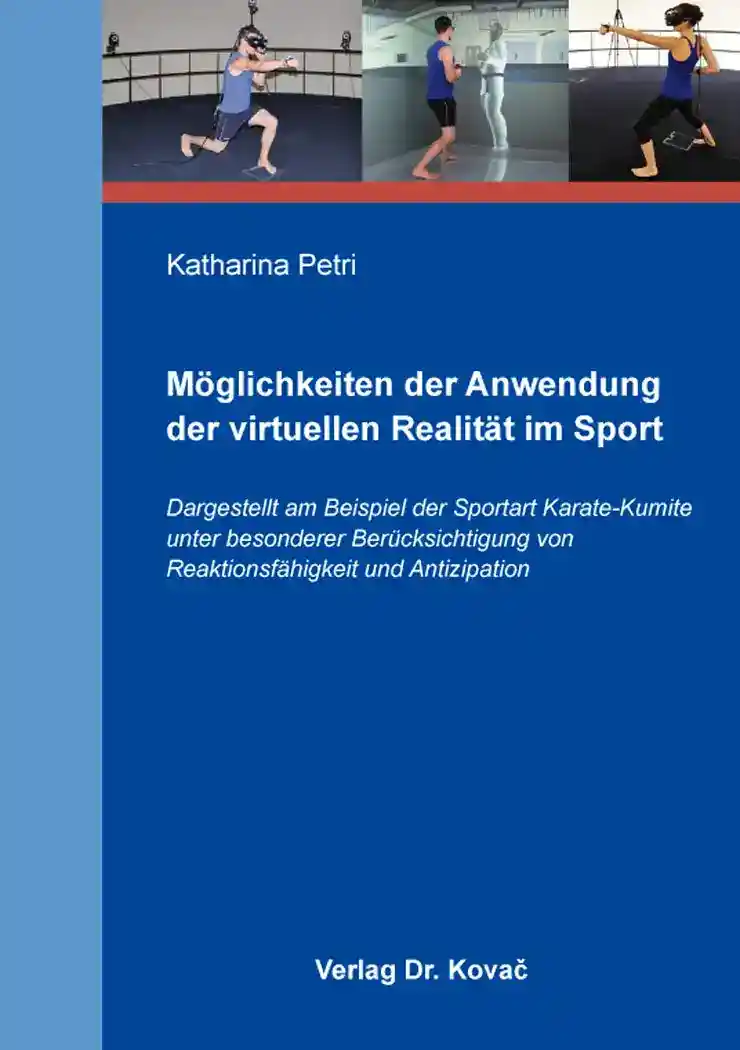Katharina PetriMöglichkeiten der Anwendung der virtuellen Realität im Sport
Dargestellt am Beispiel der Sportart Karate-Kumite unter besonderer Berücksichtigung von Reaktionsfähigkeit und Antizipation
Schriften zur Sportwissenschaft, volume 154
Hamburg 2019, 304 pages
ISBN 978-3-339-11250-7 (print) |ISBN 978-3-339-11251-4 (eBook)
About this book deutschenglish
Virtual reality (VR) is a computer-generated environment and an often-used instrument in sports science research and sports practical training. Today, there are only a few intervention studies with high-skilled athletes and sports-specific tasks in immersive VR (application with head mounted display). Furthermore, it remains unclear by which signals athletes recognize future actions. Thus, VR can be u useful method to support anticipation training or reaction training due to the depth information, interaction between user and VR, and a high degree of realism. These advantages of VR can further be supported by the application of autonomous characters, which have some kind of intelligence, and therefore are able to perform actions self-reliantly. However, such “intelligent” characters are rare because of the complicated technological creation.
The current book gives an extensive overview about previous sports science studies using VR, as well as studies about anticipation and response behavior in sports, which are performance limiting factors in several ball sports and martial arts. The present work focusses on the application of VR in sports, using the example of karate kumite. Therefore, the author also presents a detailed overview about karate. The empirical part answers the question of training recommendations in VR as well as further need for optimization to ensure purposeful training, in which athletes feel comfortable and can act naturally. For this aim, an intervention study was carried out, in which karate athletes respond to attacks of a virtual passive opponent to increase their response behavior. Furthermore, the creation and evaluation of a virtual autonomous character, which is able to perform attacks towards a real athlete self-reliantly, is presented. Additionally, in in-situ studies, anticipatory signals in the movement and in the face of the attacker are analyzed. These results can be used in future studies to further improve the autonomous character so that the character will also be able to react to the athletes’ attacks self-reliantly, and thus, the interaction scenario can be even more realistic between athlete and VR.
Keywords
AntizipationCAVEDigitalisierungHead Mounted DisplayHMDKarate-KumiteKaratetrainingMimikReaktionReaktionsfähigkeitReaktionstrainingSportwissenschaftVirtueller CharakterVirtuelle RealitätVRVR-TrainingIhr Werk im Verlag Dr. Kovač

Möchten Sie Ihre wissenschaftliche Arbeit publizieren? Erfahren Sie mehr über unsere günstigen Konditionen und unseren Service für Autorinnen und Autoren.
